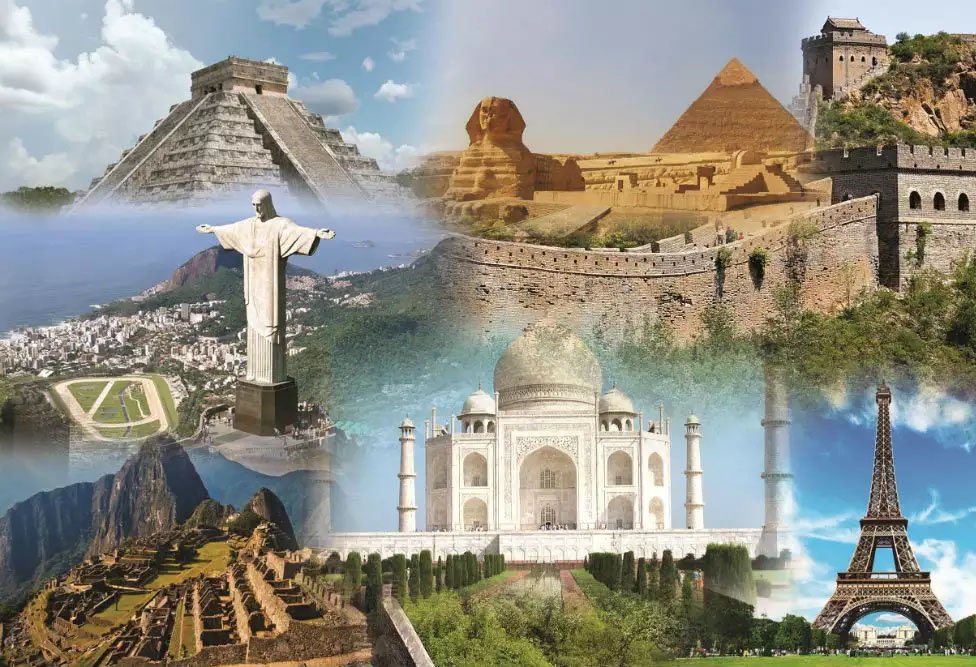
Photo Credit: Millenium Post
The Seven Wonders of the World are a collection of notable landmarks from ancient times that were considered the most impressive and awe-inspiring structures of their time. These wonders testified to the creativity, engineering and architectural skill of various civilizations. The list of Seven Wonders has evolved over the years, and the original Seven Wonders of the Ancient World have been replaced by modern versions that show the wonders of our modern world.
The original Seven Wonders of the Ancient World also included the Great. A pyramid from the ancient world. Giza, Hanging Gardens of Babylon, Statue of Zeus at Olympia, Temple of Artemis in Ephesus, Mausoleum of Halicarnassus, Colossus of Rhodes and Lighthouse of Alexandria. These structures were built by ancient civilizations such as the Egyptians, Babylonians, Greeks and Persians, and each had its own cultural significance.
For example, the Great Pyramid of Giza is the most famous of the Seven Wonders and Wonders. is the only one that remains to this day. Built as the tomb of the pharaoh Khufu, the Great Pyramid is a marvel of design and precision, with massive blocks of stone fitting perfectly into a single pyramidal shape. On the other hand, the Hanging Gardens of Babylon are said to have been a lush and green paradise built by King Nebuchadnezzar II for his wife Amytis. The gardens are said to have been an oasis of greenery and beauty in the middle of the dry deserts of Mesopotamia.
The influence of the Seven Wonders of the Ancient World cannot be underestimated. These structures were not only architectural wonders, but also symbols of the power, wealth and cultural achievements of the civilizations that built them. They are a testament to the ingenuity and creativity of ancient peoples and continue to inspire respect and admiration in the modern world.
In modern times, a list of the Seven Wonders of the World has been created through a global survey. New7Wonders Foundation. The new list includes the Great Wall of China, Petra in Jordan, the Colosseum in Italy, Machu Picchu in Peru, the Taj Mahal in India, Christ the Redeemer in Brazil and Chichen Itza in Mexico. These modern wonders represent the beauty, diversity and cultural richness of our modern world.
The Seven Wonders of the World have been a source of inspiration for countless people throughout history. From architects and engineers to artists and poets, these wonders have sparked generations of creativity and imagination. The legacy of these structures deeply influenced influential figures such as Leonardo da Vinci, who studied the ancient wonders for inspiration in his work.
Despite its rich heritage, the Seven Wonders also raise questions about culture. management, conservation and the impact of tourism on these areas. Many ancient wonders have been damaged or destroyed over time either by natural disasters or human intervention. Preservation of these monuments for future generations is an ongoing problem that requires careful care and management.
Finally, the Seven Wonders of the World have a special place in human history as symbols of human achievement and ingenuity. From ancient wonders of the past to modern marvels, these structures continue to inspire wonder and admiration. By understanding the historical context, key figures and influences of the Seven Wonders, we can gain insight into the cultural richness and diversity of our world. It is important to cherish and protect these wonders so that future generations can appreciate and enjoy them.
















